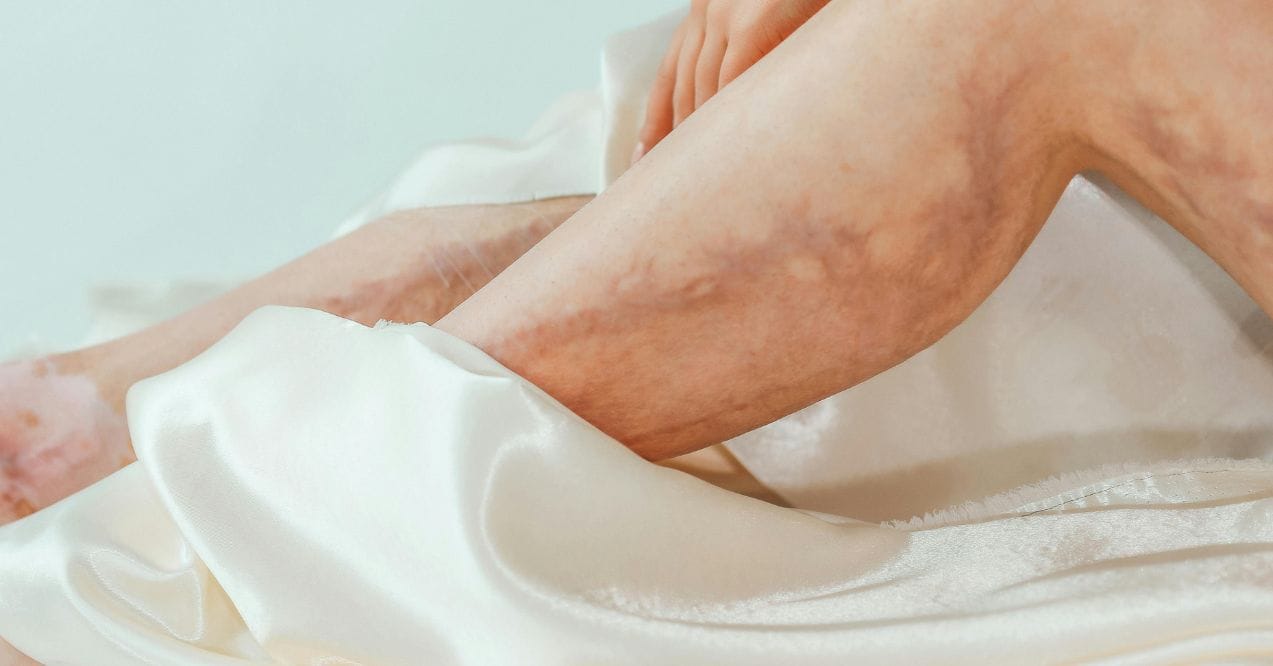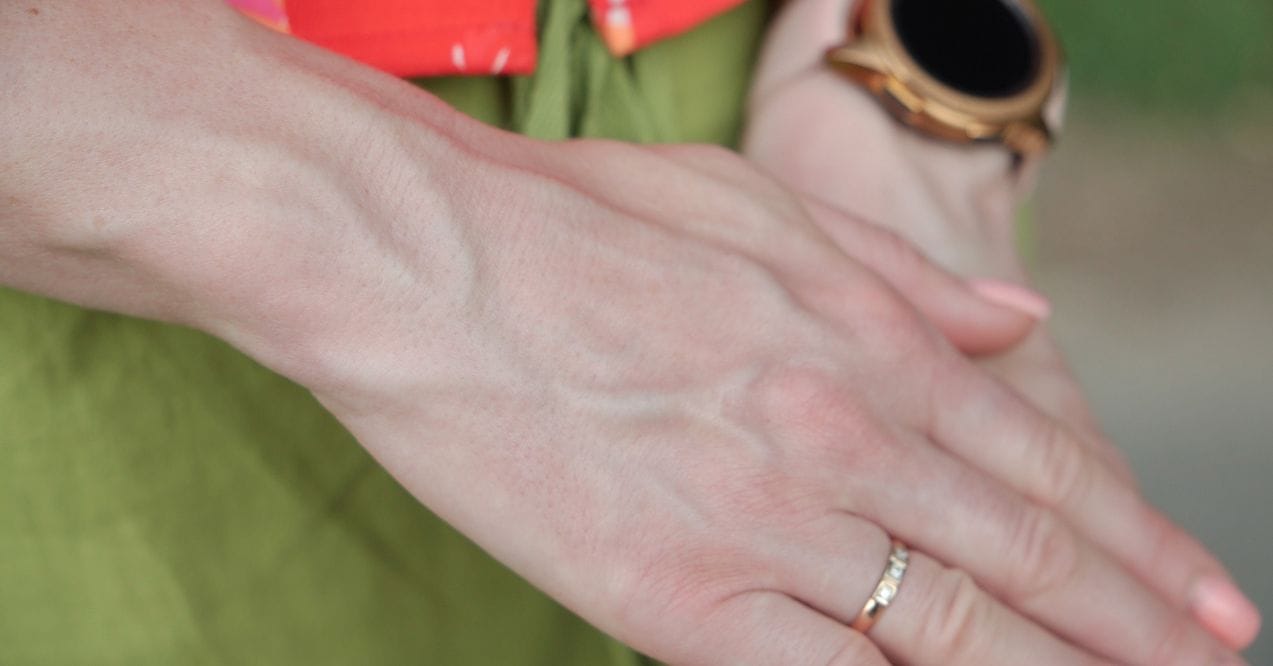What is a Blown Vein? – Vein Collapse
Medically reviewed by our experts


What is a blown vein? It’s when a needle punctures through both sides of a vein during medical procedures, causing blood to leak into surrounding tissue. This common occurrence happens during blood draws, IV insertions, or injections.
Most people experience this at least once during routine medical care. Recognizing the signs early helps you know when to seek help and what to expect during recovery. A blown vein differs from a collapsed vein, though both affect blood flow differently.
Key Article Findings
- A blown vein occurs when a needle damages the vein wall during insertion
- Symptoms include bruising, swelling, and discoloration at the injection site
- Most blown veins heal within 10-12 days without lasting damage
- Proper needle technique and vein selection help prevent this issue
- Ice packs and rest support the healing process
What Causes a Blown Vein?
A blown vein happens when the needle insertion goes wrong in several ways. The needle may puncture completely through the vein, damaging both walls. This causes blood to leak from the damaged area into nearby tissues.
Using the wrong needle size creates problems too. A needle that’s too large for a small vein will cause damage. Similarly, inserting at the wrong angle increases the risk of puncturing through the vein wall.
Healthcare professionals face challenges with certain types of veins. Surface veins near the skin tend to be more fragile. Some veins roll away when touched, making proper needle placement difficult.
Movement during the procedure often results in a blown vein. Even small movements can cause the needle to shift and damage the vein wall. Age also plays a role, as veins become more fragile and prone to damage over time.
Symptoms of a Blown Vein
The first sign of a blown vein is usually discoloration around the injection site. The area turns dark purple or blue as blood pools under the skin. This happens because the vein has ruptured and is leaking blood into surrounding tissues.
Pain and swelling follow quickly after the initial injury. The affected area feels tender to touch and may throb. Some people experience a burning or stinging sensation that lasts several hours.
Physical symptoms include:
- Visible bruising that spreads from the insertion site
- Swelling that makes the area feel tight
- Warmth around the affected vein
- Difficulty moving the affected limb comfortably
An ice pack applied early may reduce swelling and discomfort. The bruising typically darkens over the first few days before gradually fading. Most symptoms peak within 48 hours of the injury.
Potential complications are rare but worth monitoring. Watch for signs of infection like increasing pain, red streaks, or fever. Severe swelling that doesn’t improve with ice and rest needs medical attention.
Blown Vein vs. Collapsed Vein
A blown vein and collapsed vein are two different conditions that affect blood flow. A blown vein occurs when the needle punctures through the vein wall, creating a hole. Blood then leaks out into surrounding tissues, causing the characteristic bruising.
A collapsed vein happens when the vein walls cave inward and stick together. This blocks blood flow completely through that section of the vein. Unlike a blown vein where blood escapes, a collapsed vein traps blood and prevents circulation.
The causes differ significantly between these conditions:
Blown Vein:
- Results from immediate needle trauma
- Happens during a single medical procedure
- Blood can no longer flow normally due to the puncture
Collapsed Vein:
- Develops from repeated needle use in the same area
- May occur from prolonged IV therapy
- Can become permanent if severely damaged
A rolling vein increases the risk of both conditions. These veins move under the skin when touched, making accurate needle placement challenging. Healthcare professionals often stabilize these veins before insertion to prevent damage.
How to Reduce Risk of a Blown Vein
Immediate vein treatment starts with applying pressure to stop bleeding. Hold firm pressure for 2-3 minutes after needle removal. This helps the puncture site begin closing and reduces blood leakage.
Apply an ice pack wrapped in cloth to the area for 10-15 minutes. Repeat this every few hours during the first day. Cold therapy reduces swelling and numbs discomfort effectively.
Rest plays a vital role in recovery. Avoid heavy lifting with the affected arm for several days. Keep the limb elevated when possible to reduce swelling.
For those seeking additional support, natural supplements like VeinRenew may help maintain healthy vein function during recovery.
Risk reduction strategies healthcare professionals use include:
- Selecting appropriate needle size for each vein
- Securing the vein before insertion
- Using proper insertion angles (15-30 degrees)
- Choosing healthy, visible veins when possible
Patients can help by staying hydrated before procedures. Well-hydrated veins are easier to access and less likely to collapse. Women may find additional support through targeted supplements for women that promote overall vascular health.
When to Seek Medical Help for a Blown Vein
Most blown veins recover without medical intervention within 10-12 days. However, certain symptoms signal the need for professional evaluation. Seek help if pain worsens instead of improving after 48 hours.
Watch for these warning signs:
- Red streaks extending from the injection site
- Increasing warmth or fever
- Pus or unusual drainage
- Numbness or tingling that persists
Healthcare providers can assess whether additional treatment is necessary. They may prescribe antibiotics if infection is present. Severe cases might need ultrasound evaluation to check vein function.
The Role of Needle Size and Insertion Technique
Proper needle selection makes a significant difference in reducing vein damage risk. Healthcare professionals match needle gauge to vein size carefully. Smaller veins need smaller needles to avoid trauma.
The insertion angle matters equally. A shallow 15-30 degree angle works best for most veins. Steeper angles increase the risk of puncturing through both vein walls. Experienced professionals also anchor the vein with their non-dominant hand to prevent rolling during insertion.
Conclusion
A blown vein occurs when needle insertion damages the vein wall, causing blood leakage and bruising. While uncomfortable, most cases recover completely within two weeks with proper care. Ice application, rest, and monitoring for complications support natural recovery.
Knowing the difference between blown and collapsed veins helps you communicate better with healthcare providers. If you notice persistent symptoms beyond normal recovery time, seek medical evaluation promptly.
Apply immediate pressure to stop bleeding, then use ice wrapped in cloth for 10-15 minutes. Keep the area elevated and avoid strenuous activity. Monitor for signs of infection and contact your healthcare provider if symptoms worsen.
Most blown veins recover within 10-12 days. Bruising may last up to two weeks. The vein itself repairs in this timeframe, though healthcare providers wait longer before using it again.
Rarely. Most blown veins recover completely without lasting effects. Repeated trauma to the same vein or severe damage may cause permanent changes. Following proper aftercare reduces any risk of complications.
A blown vein has a puncture that leaks blood outward into tissues. A collapsed vein’s walls cave inward, blocking blood flow. Blown veins result from single incidents while collapsed veins often develop from repeated use.
When the vein ruptures, blood escapes into surrounding tissues. This pooled blood appears as bruising under the skin. The body’s inflammatory response to the injury causes swelling as it begins the recovery process.
Blown vein. (2025). Cleveland Clinic.
Pietrangelo, A. (2019). What can cause a blown vein and how to treat it. Healthline.
Dresden, D. (2020). Symptoms and treatment of a blown vein.
Popular Articles
Advertisement. This site offers health, wellness, fitness and nutritional information and is designed for educational purposes only. You should not rely on this information as a substitute for, nor does it replace, professional medical advice, diagnosis, or treatment. If you have any concerns or questions about your health, you should always consult with a physician or other health-care professional. Do not disregard, avoid or delay obtaining medical or health related advice from your health-care professional because of something you may have read on this site. The use of any information provided on this site is solely at your own risk.





